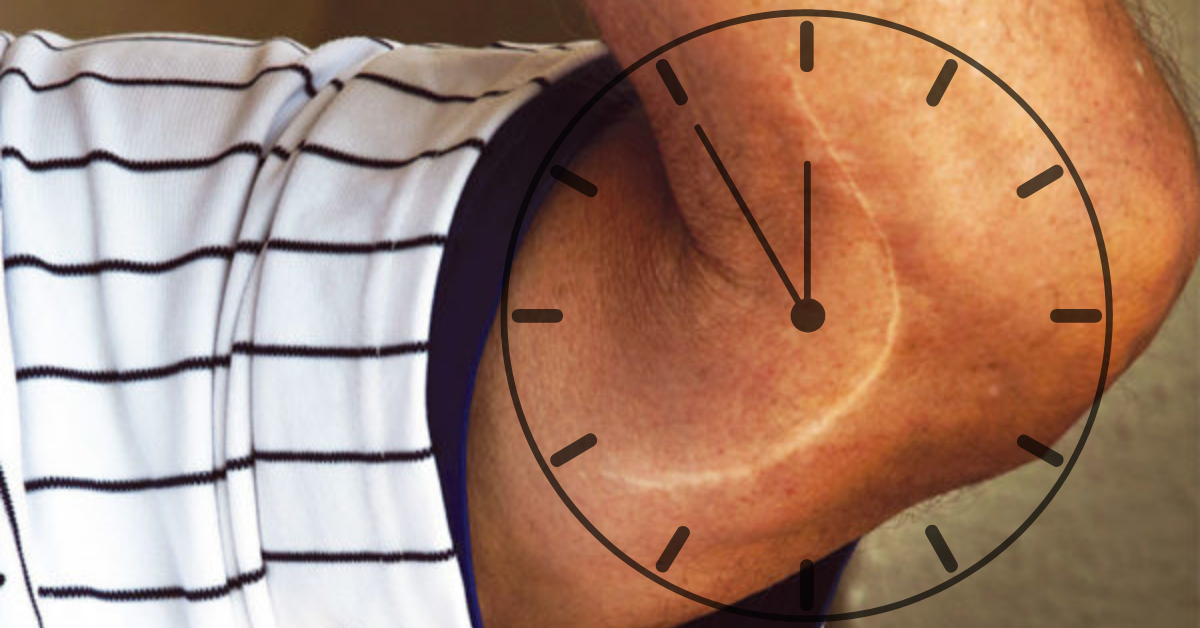Tommy John Surgery Recovery Time (The Key to Success)

Tommy John surgery is a major procedure, and the recovery time reflects the severity of the operation. While 12 months is often considered the baseline recovery time, the reality is that each individual will need a different amount of time to fully recover. In this article, we will walk you through the process by which you should view your Tommy John recovery time, and help you apply a “criteria based approach” in order to maximize your chances of a successful recovery.
Tommy John Surgery Recovery Time
On average, Tommy John surgery recovery takes about 12 months. Some recoveries can be as quick as 9 months, and others as long as 18 months. Many factors play into how long it will take each individual to fully recover, and these factors should be monitored to ensure a successful recovery.
Reconstruction vs. Internal Brace
Perhaps the most significant factor that will influence the Tommy John surgery recovery time is whether the athlete has undergone a full UCL reconstruction or a UCL internal brace procedure.
We cover each of these types of operations in much more detail in our Tommy John Injury (The Complete Guide) article. For the sake of this article, we will talk only about the recovery time for each.
.png?width=500&height=500&name=pitcher%20throwing%20image%20(2).png)
A full UCL reconstruction requires significantly more time to recover from than does an internal brace operation. The reason for this is simple–with reconstruction, the new ligament must be given time to fully “ligamentize”, which we will touch on shortly.
After an internal brace procedure, the athlete can begin throwing much sooner and also progress the throwing much quicker, since there is no graft that needs to heal. All the same principles apply to the recovery process, but most athletes are able to progress more quickly.
Typical recovery time for an internal brace procedure is anywhere from 4-9 months.
This timeline is about half of what an athlete can expect from a traditional UCL reconstruction timeline.
In our opinion, 9 months would be the absolute fastest that a player could ever expect to return from a full reconstruction, and would likely only be possible for a position player returning to play. A pitcher attempting to return by 9 months would signify an aggressive rehab plan that would be performed with absolutely no setbacks. For most athletes, aiming for this quick of a recovery is unrealistic at best, and risky at worst.
An expected timeline of 12-14 months is a much more realistic and safe goal for most athletes. In order to meet this timeline, an athlete needs to take their rehab very seriously, and avoid any major setbacks. However, they also give themselves some wiggle room in terms of slowing down the progressions when discomfort arises.
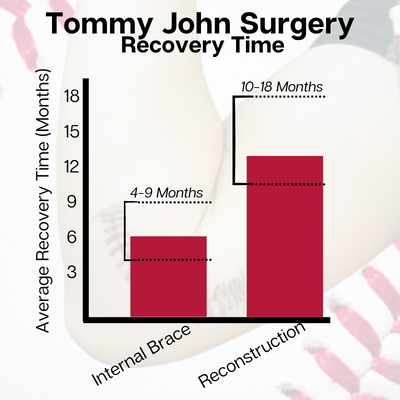
Knowing when to take your foot off the gas and give your arm a break is a crucial part of Tommy John rehab.
For some athletes, the unfortunate truth is that setbacks will come up, and will require even longer to fully make it back to full strength. These are the athletes that can take 18 months or longer to fully recover.
Interestingly, the athletes who most often end up taking the longest to fully recover, are the ones who originally wanted to rehab the quickest, and ended up pushing themselves too hard too soon.
Prioritize a slow, steady, and successful recovery!
Ligamentization
In order to understand why Tommy John rehab takes so long, it might help to understand a bit behind what is actually going on in your elbow.
The process of Tommy John surgery involves taking a tendon graft from somewhere else in the body, and using it to replace the ulnar collateral ligament.
Tendons and ligaments are similar, but not the same. Tendons connect bone to muscle, whereas ligaments connect bone to bone. These tissues naturally have slightly different properties, but amazingly, the body is able to adapt and transform tendons into ligaments, given enough time!
The process by which a tendon is transformed into a ligament is called ligamentization.
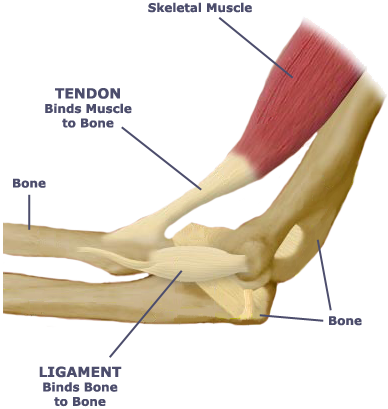
This process can actually take up to 2 years before the new ligament is capable of the same level of function as your original ligament! Check out our blog post on ACL recovery to read more in depth on the process of ligamentization.
When it comes to Tommy John surgery, you must ensure that you are giving your new ligament ample time to heal, as well as gradually adding in all the new stressors that it must be capable of handling. The harsh truth is that no matter how badly you want a quick recovery, nothing can speed up the time it takes your body to transform the tendon into a ligament.
Criteria Based Protocol
A typical Tommy John rehab protocol can be classified as a time based protocol. This is the type of program that doctors will often prescribe and is characterized by performing certain activities and movements based on how far removed from surgery the athlete is.
This type of rehab progression can provide a good general guideline, but it fails to take into consideration how each individual athlete is progressing within each stage of rehab.
We prefer to structure an athlete’s rehab by using a criteria based protocol.

With a criteria based approach, we require the athlete to meet certain criteria before progressing to the next phase of rehab. By requiring an athlete to demonstrate that they are adequately prepared to move to the next stage of rehab, we avoid adding stress that the ligament may not be ready to handle.
Think of the time based protocol as a speed limit. This is the fastest that the doctor believes the ligament will possibly be able to handle the necessary stresses of returning to pitching.
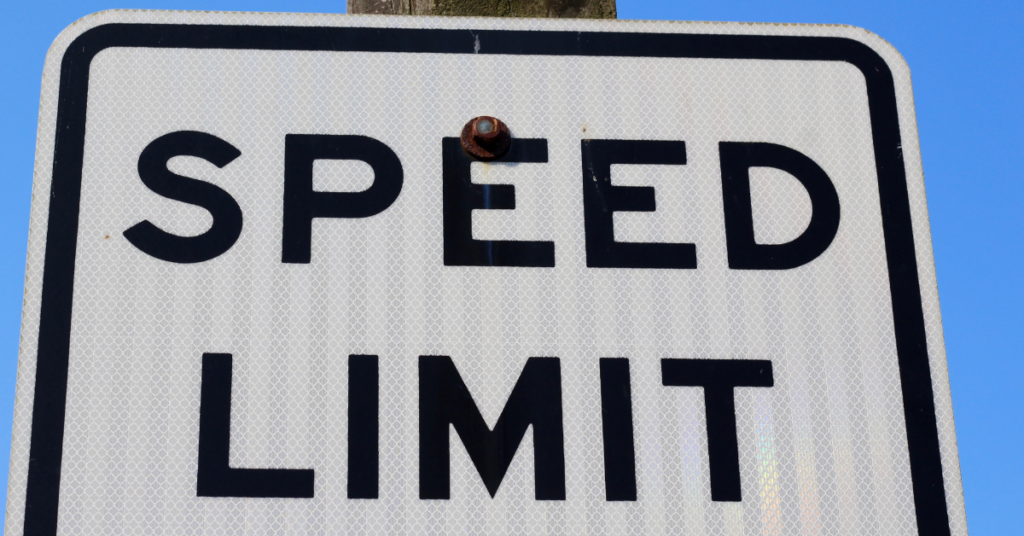
But it is not mandatory, nor is it wise, to try and push yourself at the “speed limit” throughout the entire rehab process. There may be times when you are prepared to progress quickly, and other times when you are not prepared. This is why having criteria to measure your readiness is so important.
Below is a list of the most important criteria that we use throughout the Tommy John rehab process. Later in the article, we will get into more detail on how and when to use each of these.
- Range of motion (wrist, elbow, shoulder, T-spine)
- Swelling
- Strength (various shoulder, elbow, and forearm movements)
- AC ratio (acute:chronic workload ratio, which measures arm stress)
- Throwing velocity
- Self assessment of pain level
- Recovery or readiness scores
By requiring an athlete to demonstrate that they are adequately prepared to move to the next stage of rehab, we avoid adding stress that the ligament may not be ready to handle. Using objective criteria takes the guesswork and opinions out of the rehab and supports decisions with objective data and information.
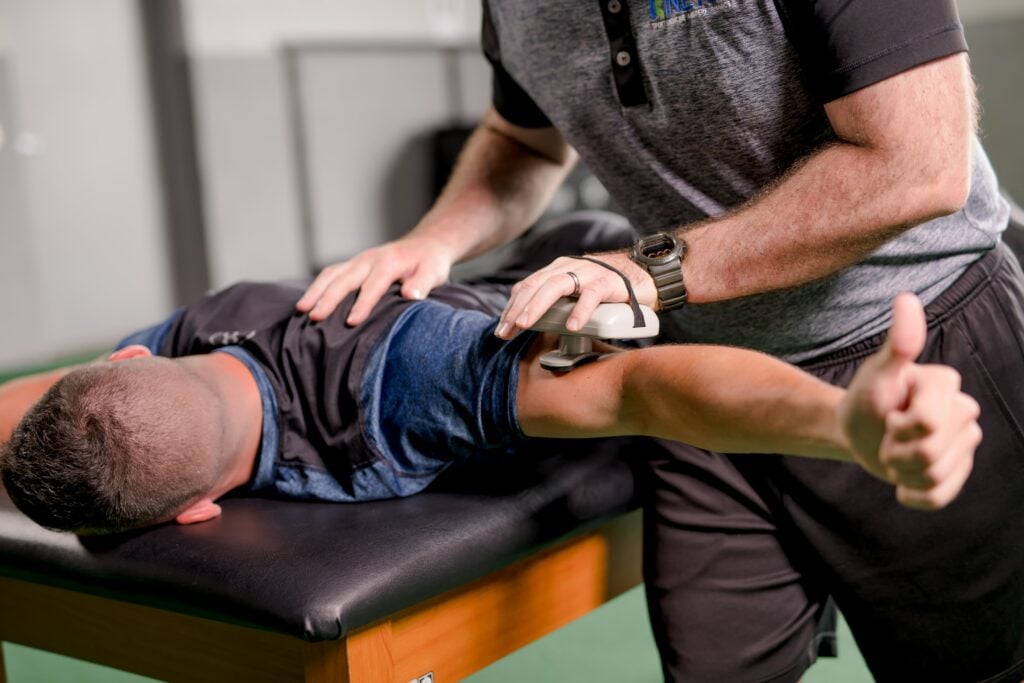
A criteria based approach also has the added benefit of providing a level of competition and goal setting for the athlete. Many athletes have a difficult time mentally dealing with the challenges that come after a major injury. Losing the competitive outlet, team comradery, and goals to strive for can leave a void in many athletes.
Providing specific criteria for the athlete to shoot for keeps the rehab setting fun and adds a competitive game like element to it. We have found this to make a big difference in our athletes!
Velocity vs. Distance Based Throwing Program
Similar to the generic time based progression that doctors prescribe, we also have an alternative type of programming that we use for a return to throwing program.
A standard throwing program prescribed by doctors will likely be distance based. This will be based around performing a certain number of throws at a certain distance, and gradually increasing the number of throws and distance.
The concept of this type of program is great, but it has one major limitation–distance does not directly determine throwing velocity. An athlete can throw a ball 50 mph or 100 mph from 60 feet! Telling an athlete to perform 25 throws from 60 feet leaves way too much room for error in our experience, which is why we prefer confining athletes to a specific velocity.

With a velocity based throwing program, we instruct the athlete to perform a certain number of throws within a certain velocity range (25 throws at 60-65 mph). We have found that using this method ends up yielding the desired effect of the distance based throwing–ensure a slow and steady build of throwing velocity without introducing too much stress all at once.
In our opinion, being able to objectively measure and progress everything the athlete does throughout the rehab process gives us our greatest chances of having a successful recovery while limiting setbacks.
Dealing With Setbacks
Setbacks are a natural part of any rehab progression. Progress is not linear, it is often filled with many small peaks and valleys throughout the journey. Understanding how to handle minor discomforts and unexpected challenges will be a determining factor in the speed and success of your rehab.
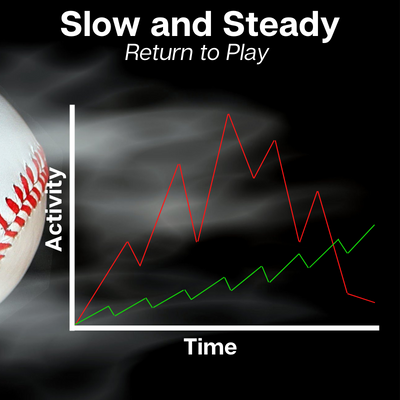
The simple truth is that you are not going to feel your best every single day.
Some days, doing certain exercises might hurt. Some days, your strength or range of motion might not be what it should be. No sweat, this is the case for everybody!
What you choose to do on these days, however, is extremely important.
It is never a good idea to push yourself to new limits when you are not feeling your best, or when the metrics say you are not ready. On these days, you are much better off dialing back the intensity and giving your body some time to recover. If managed correctly, you should be in a position to try and push yourself again within a few days or weeks.
On the other hand, if you choose to push yourself even on days when your body is telling you not to, you are putting yourself at a significant risk of creating a bigger problem.
These bigger problems are what result in longer setbacks–weeks or months. This is exactly why we use objective measurements to ensure our athletes are only pushing themselves on days when their body is prepared to be pushed, and only pushing to slightly further limits.
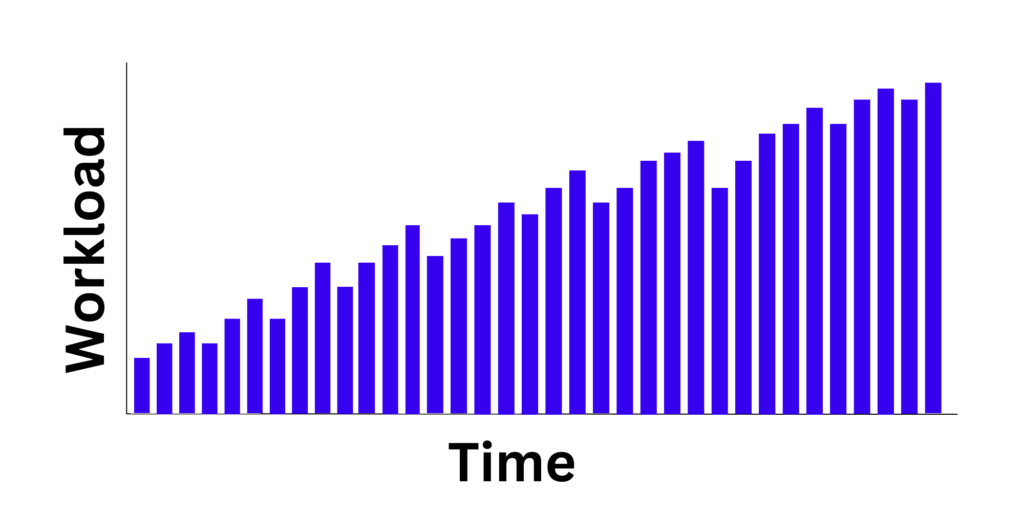
How to Throw Harder After Tommy John Surgery
Anyone who comes back from Tommy John surgery comes back throwing harder, right?
Wrong!
This myth has become part of the baseball culture, and couldn’t be further from the truth.
Some pitchers do come back throwing harder than they did before surgery, but it is certainly not the norm. Coming back and throwing harder requires extreme dedication and hard work. For the athlete who is serious about their rehab, having a year away from competition does provide a unique opportunity to make progress in the areas necessary to gain velocity.
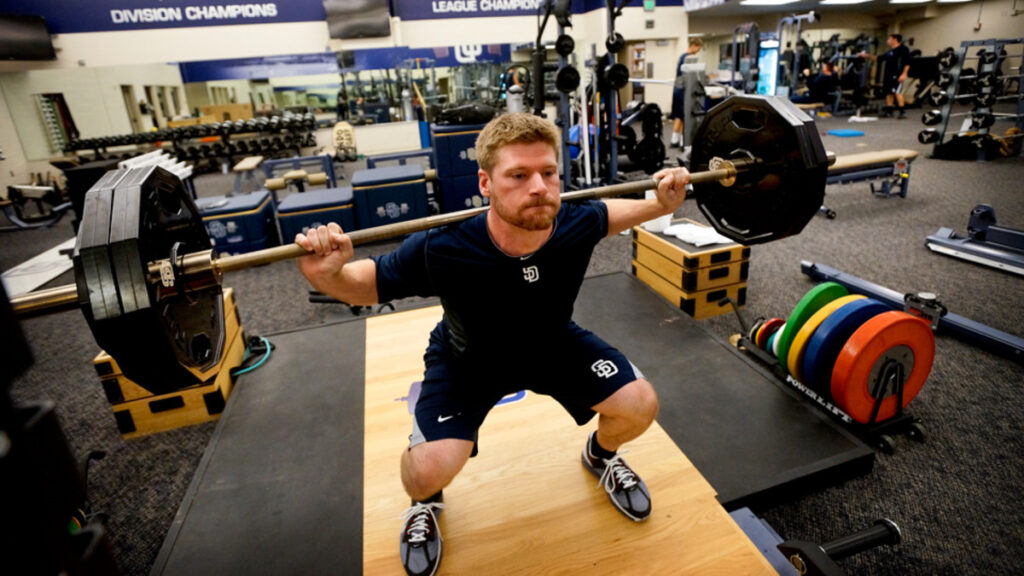
Here are some ways to maximize your chances of throwing harder after Tommy John surgery:
- Choose a doctor who specializes in elbow procedures
- Follow the treatment plan and avoid major setbacks
- Work to significantly improve lower body and core strength
- Improve mobility and flexibility
- Improve pitching mechanics
- Prioritize recovery (sleep, nutrition, hydration)
- Educate yourself and learn more about your craft
- Improve explosiveness
With hard work and good physical therapists and pitching coaches, it is possible to come back from Tommy John throwing harder. Rehabbing from Tommy John surgery is a challenge that if met head on, presents an opportunity to significantly improve as a player.
Tommy John Rehab Timeline
We choose to structure the rehab timeline around the doctor’s time based protocol, used in conjunction with our criteria based approach. The timeline should never be set in stone, and should be adjusted continually throughout the process.
Below, we will provide you with our framework for a Tommy John rehab timeline.
We split it up into phases based around what the UCL is physically able to handle, as well as what type of exercises the athlete should be prioritizing. For each phase, we will highlight some important criteria and the tools needed for measuring them, types of exercises that should be done, important cautions, and how we know when the athlete is ready to progress to the next phase.
Basic Protection Phase (Weeks 0-3)
Goals
The primary goal of this phase is to protect the healing graft. We also want to manage pain and swelling, and begin to regain range of motion.
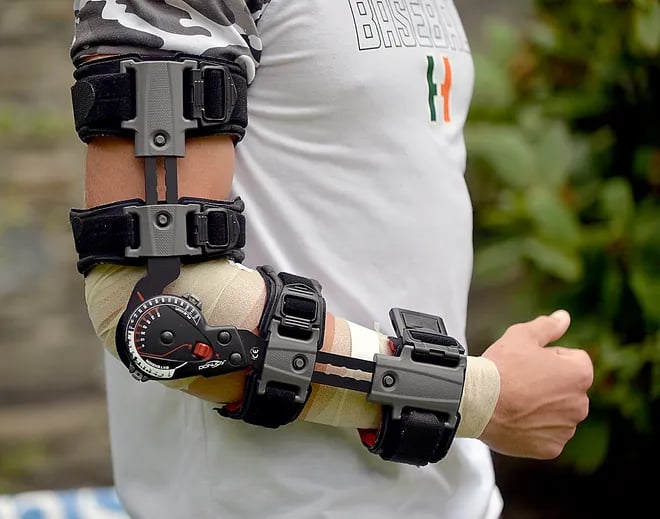
Important Criteria
- Wrist range of motion (ROM) – Extension/flexion
- Shoulder ROM – Internal/external rotation, overhead flexion
- Elbow ROM – Extension/flexion
- Stretch the elbow no further than 5° extension and 125° extension
- Keep elbow brace locked at 10° extension and 120° flexion
- Elbow swelling – Swelling should decrease weekly
Tools For Measuring Criteria
- Goniometer – Used for measuring all range of motion
- Tape measure – Use to measure swelling
Exercises
Only very light forearm and shoulder exercises should be performed during this phase. Remember, the primary goal right now is protection rather than increasing strength. Doing these light exercises has the benefits of helping move out inflammation as well as slowing down muscle atrophy.
This is also a great opportunity to work on zone 2 cardio, which is the lightest form of cardio work that can typically be done. This type of cardio work should be light enough that the athlete is able to hold a conversation during exercise.
- Forearm, elbow, and shoulder exercises with NO resistance
- Scapular retraction exercises with NO resistance
- Core exercises that do not require use of the arms
- Non impact conditioning (zone 2 cardio)
- Stationary bike or walking
Important Cautions
It is imperative that the athlete avoid valgus stress at all costs! The graft is very fragile and weak at this point, so extra care must be taken. In order to ensure this, the athlete should wear their brace at all times except while working with their physical therapist.
Ready to Progress
This is one of the few phases that is actually largely time based. After 3 or 4 weeks, the graft has had enough time to heal so that the athlete can safely move to the next phase and begin basic strengthening work.
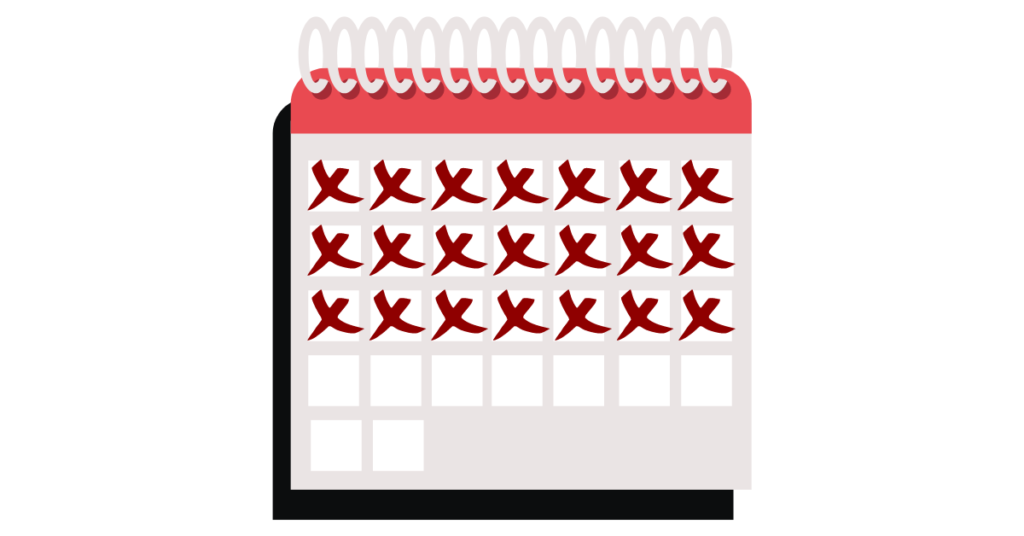
In addition to waiting for time to pass, we also look for pain to begin subsiding as well as an ability to comfortably bend and straighten the elbow within a certain range. Pain will likely not be entirely gone quite yet, but we want it to be decreasing.
Basic Strengthening Phase (Weeks 4-7)
Goals
The focus of this phase is largely on increasing elbow and shoulder range of motion. By the end of this phase, we ideally want to be close to full ROM. Regaining full range of motion ensures that we are ready to strengthen the arm and begin laying the groundwork for throwing.
Additionally, the athlete can begin performing more strength work during this time. Keep in mind, this strength work should be very basic and use little or no resistance, but it will be enough to regain some of the strength that was lost in the first few weeks.
Important Criteria
- Wrist flexion/extension – 60° of total ROM
- Forearm pronation/supination – 80° of total ROM
- Elbow flexion/pronation – Should regain full ROM by week 6 (0° extension/135° flexion)
- Shoulder ROM
- Overhead flexion – 180° or equal to other arm
- Internal/external rotation – 180° total arc ROM
- Elbow swelling – Should be completely gone by week 6
Tools for Measuring Criteria
- Goniometer – Used for measuring ROM
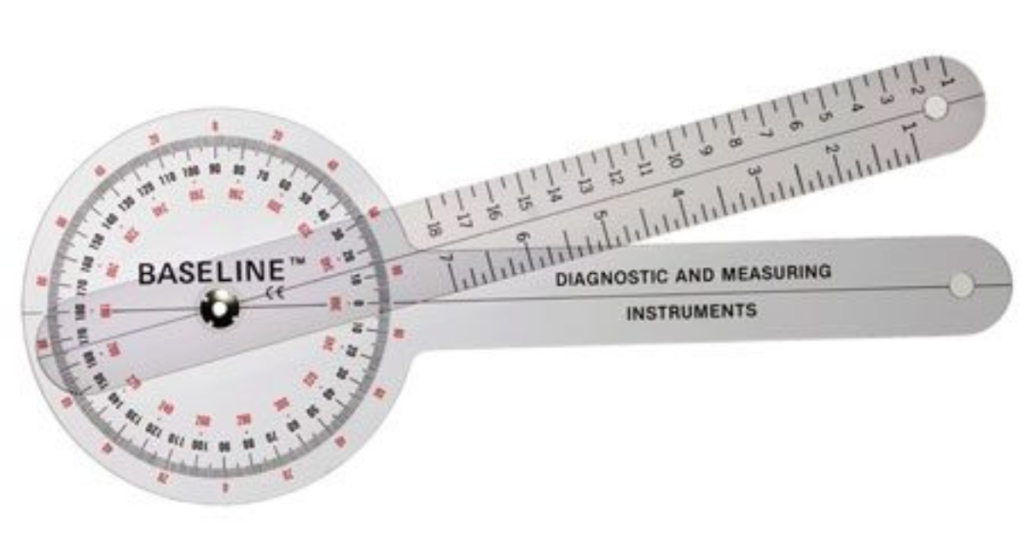
Exercises
The exercises of this phase should be largely geared towards building a strong foundation of forearm, shoulder, and scapular strength. There are plenty of ways to work within the limitations of this phase while still getting a great training effect.
Regaining full elbow range of motion is one of the most important criteria for this phase. If the athlete is struggling to regain full motion, low load long duration stretching is one of the best methods to work on regaining full motion.
The athlete may safely begin performing isometric exercises at this point, however, we prefer either controlled tempo or rhythmic stabilization type exercises for now. We typically save isometrics for further down the road after the athlete has mastered the controlled tempo exercises.
This is a great time to use blood flow restriction(BFR) technology while doing these upper body exercises. The athlete is not cleared to use heavy resistance yet, but using BFR allows the athlete to get the benefits of strength work and muscle hypertrophy while only working at 20% of max effort.
- Elbow extension/flexion exercises
- Low load long duration stretches
- Wrist/forearm exercises with manual resistance or light dumbbells
- Flexion, extension, pronation, supination, radial deviation, ulnar deviation
- Gripping exercises
- Shoulder exercises with manual resistance, light dumbbells, or tubing
- Scapular movements (retraction, protraction, upward/downward rotation)
- Serratus punches
- Scaption, T’s, Y’s, prone rows
- Internal/external rotation with arm at side
- Core exercises
- Non impact cardio
- Lower body exercises that do not include use of arms
- Body weight exercises (lunges, squats, RDL’s, mini band walks, etc.)
- Exercises with weight vest
Important Cautions
Valgus stress must continue to be avoided at all costs. Some doctors may allow the athlete to discontinue use of their elbow brace during this phase, but extra care must be taken in order to not put any unexpected valgus stress on the elbow.
Although we begin doing much more intense upper body exercises during this time, the elbow is not ready for any weight bearing exercises yet. Overall, we want the resistance on the arm to remain somewhere around the 5-10 pound range. There are plenty of ways to get a great training effect with this type of resistance, so please, be cautious not to put more stress on the arm than it is ready for!
Ready to Progress
The end of this phase and the beginning of the next phase should really be blended smoothly. There should not be one individual week where the athlete is given a ton of new stressors all at once. With that being said, there are a few criteria we look for in order to feel confident in progressing the athlete to the advanced strengthening phase.
First and foremost, the athlete should be completely pain free with all exercises they’ve performed to this point. We should never progress anything if the athlete is still having pain with a lower level variation of an exercise or modality.
Besides being pain free, the athlete should have full elbow, wrist, and shoulder range of motion according to the numbers laid out earlier in this section. Building strength through a full range of motion is vitally important to being able to return to throwing, so we want to make sure that the athlete actually has that full range of motion.
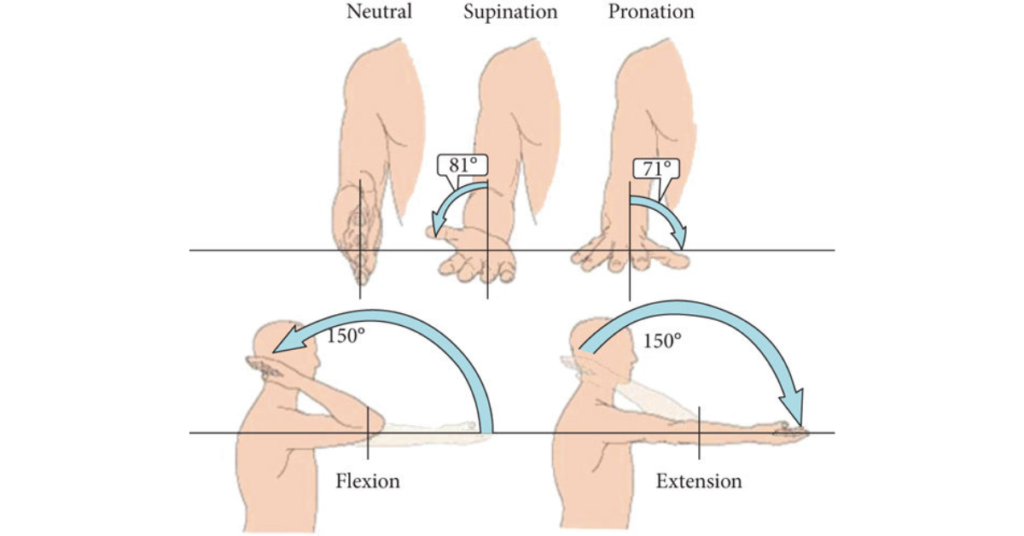
Advanced Strengthening Phase (Weeks 8-12)
Goals
The goal of the advanced strengthening phase is to continue building on the foundation of strength that we built during the previous phase. The athlete should begin adding in weight bearing exercises, heavier resistances, and continue progressing all the shoulder and forearm work.
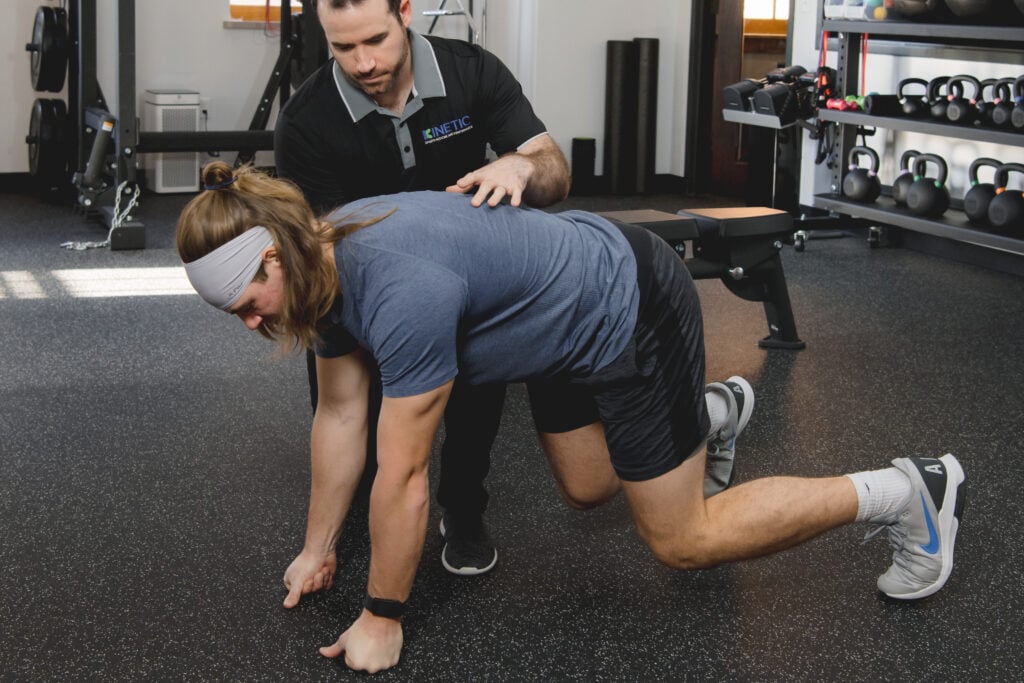
In addition to increasing the resistance, different variations of each exercise should be performed–eccentric, isometric, slow tempo, rhythmic stabilization. By varying the type of exercise, the athlete is exposed to all the different types of muscular contractions that they will be required to master in order to safely throw a baseball.
The advanced strengthening phase is also a great time to begin collecting strength data on the athlete. We begin by collecting baseline data, and continue collecting data to use as our criteria for deciding on when to progress. As a general rule of thumb, we look for strength numbers in the throwing arm to be at about 80% of the non throwing arm during this time.
Important Criteria
- Maintain full ROM in wrist, elbow, and shoulder
- Thoracic spine rotation ROM – 50° or greater
- Strength measurements (>80% of non throwing arm)
- Shoulder external rotation (at neutral)
- Shoulder internal rotation (at neutral)
- Scaption
- Grip strength
- Shoulder horizontal abduction (T position)
Tools for Measuring Criteria
- Goniometer – Used for measuring ROM
- Dynamometer – Used for measuring strength
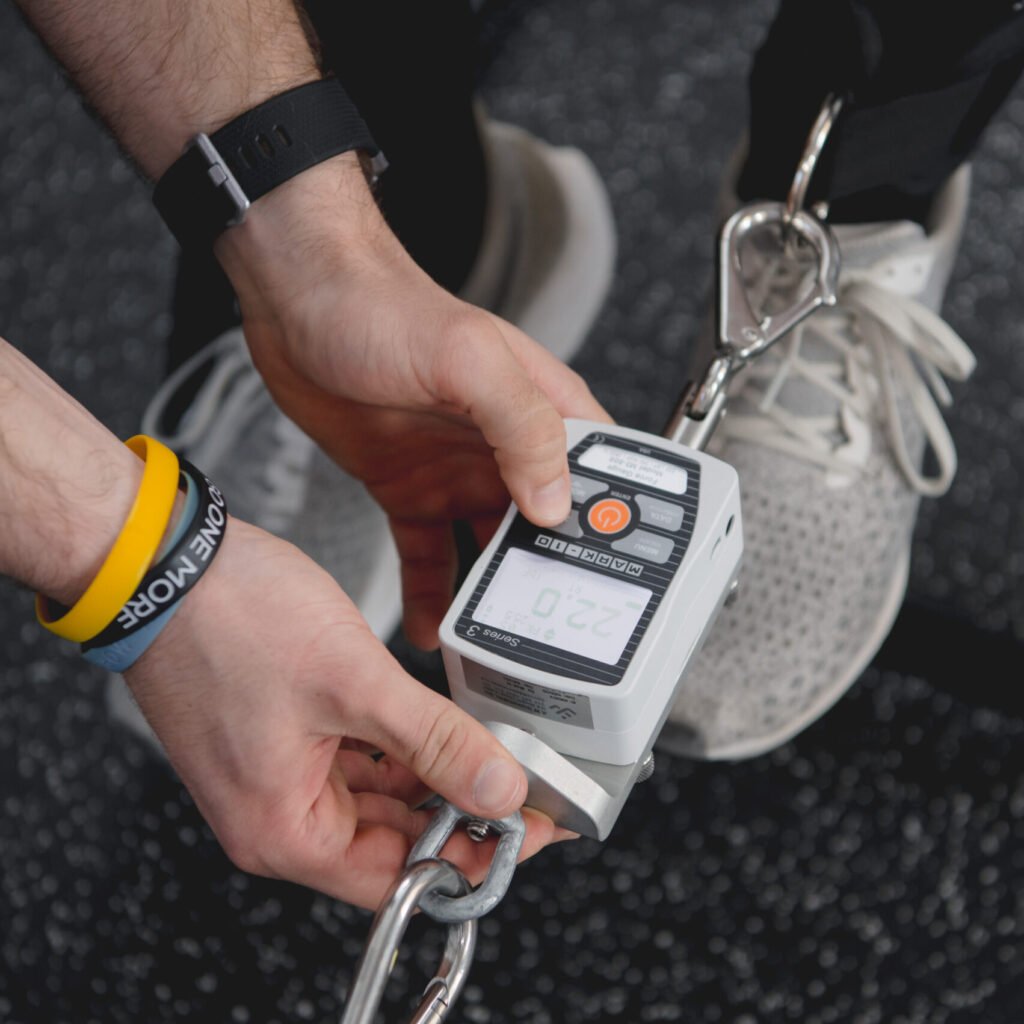
Exercises
This phase is largely a progression of the previous phase. There are a few new types of exercises that can be performed, but mostly, resistance should be increased or the exercise should be progressed in order to continue challenging the athlete.
Most notably, weight bearing exercises are now safe to perform. Exercises like push ups, bear crawls, bird dogs, and hangs can now be performed in their most basic forms. Remember, never jump right into an advanced version of a new exercise or add too much at once! Start as regressed and slowly as possible, and only advance these exercises as the athlete feels comfortable.
Along with weight bearing exercises, the athlete may begin to use heavier weights during upper body strength work. Some doctors may have specific opinions on how much weight is safe to hold, but we feel that it is safe to use weights as heavy as 30-50 pounds depending on the athlete.
- Forearm, elbow, and shoulder exercises
- Increase resistance from previous phase
- Vary the type of exercise (eccentric, isometric, long duration, rhythmic stabilization)
- Upper body exercises
- Weight bearing exercises (push ups, bear crawls, hangs)
- Increase weight with other exercises (rows, press variations, shoulder exercises)
- Core exercises
- Weight bearing core exercises can begin
- Lower body exercises
- Progress to lower body exercises holding weights
Important Cautions
Continue to avoid valgus stress on the elbow. The elbow may feel like it’s ready to begin throwing or handle valgus stress, but more time must be allowed to pass.
The primary caution is to always progress slowly when introducing new exercises or stimuli. Progress these things by 5-10 pounds per week, and start out new exercises with 2 or 3 sets of a regressed variation.
Ready to Progress
Graduation from this phase is the most significant transition so far. The next phase will introduce plyometric type exercises, which put significantly more stress on the elbow. We want to be absolutely certain that the athlete is fully ready to progress to plyometric exercises.
We continue to look for all the same things as previous phases–maintaining full ROM in the wrist, elbow, and shoulder, as well as performing all exercises pain free. Along with these criteria, we also require the athlete’s strength numbers in the throwing arm to be at least 80% of the strength of their non throwing arm.
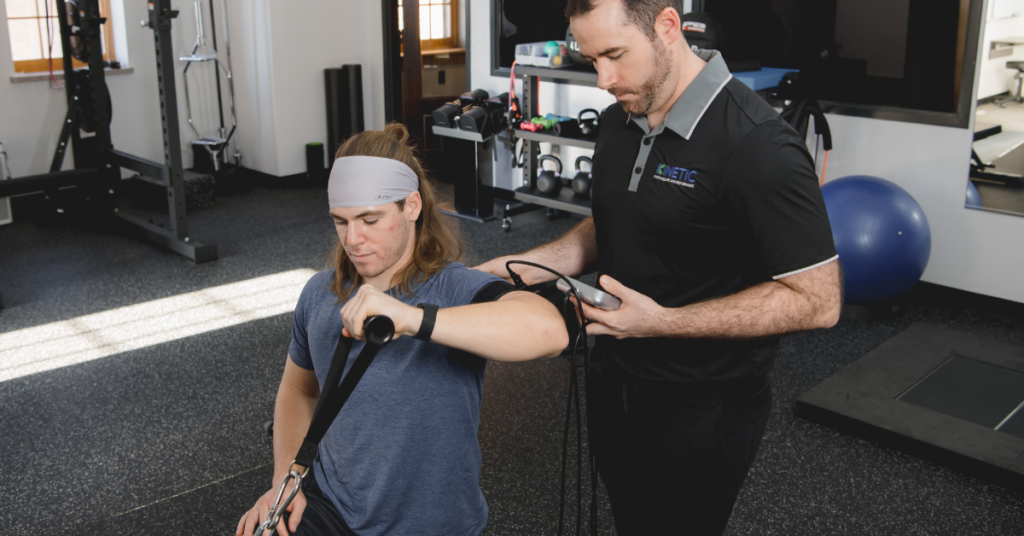
Functional Strengthening Phase (Weeks 12-16)
Goals
By 3-4 months post surgery, most athletes will be ready to progress towards functional strengthening exercises, which will in turn prepare them to begin a throwing program. The goal of this phase is to graduate from strictly slow and controlled upper body exercises, and begin performing plyometric and dynamic type movements.
Performing slow and controlled exercises gives us the greatest amount of control and safety in protecting the UCL. This is extremely important during the early stages of rehab when protection of the graft is the primary concern.
However, throwing is not a slow and controlled movement, and we must eventually train the elbow to handle explosive movements that match the intensity of throwing a baseball.
Jumping directly from our basic strengthening phase into throwing would be disadvantageous, so this functional strengthening phase serves as a bridge to prepare the elbow for the demands of throwing. Just like all other new exercises that are added in throughout the process, starting slow and testing the waters is important.
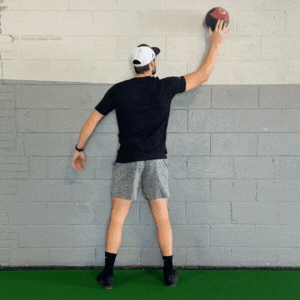
Important Criteria
- No pain with any exercises
- Maintain a full range of motion (elbow, shoulder, forearm)
- Increasing strength numbers since baseline measurements
Tools for Measuring Criteria
- Goniometer – Used for measuring ROM
- Dynamometer – Used for measuring strength
- Radar gun – Use for measuring medicine ball throws (optional)
Exercises
This phase presents an opportunity to add in many new exercises, as well as continue building on the exercises done in previous phases. Plyometric exercises should be done cautiously at first, making sure that the athlete is not experiencing discomfort, and then increasing the intensity of those exercises over time.
Our preferred exercises here are largely based around the use of medicine balls. We use balls ranging in weight from 1 pound up to 10 pounds, and perform a wide variety of exercises. We are not only trying to prepare the elbow for throwing, but also build strength in the shoulder and core, as well as train proper kinematic sequencing of rotational movements.
Near the end of this phase, the athlete can optionally begin throwing a tennis ball very lightly. Many athletes benefit from the added confidence of feeling their arm safely performing a throw, before actually beginning the return to throwing program.
- Medicine ball exercises (4-10 lbs.)
- Chest pass
- Overhead throw
- Rotational toss/shot put
- Wall taps (overhead, 45°, 90/90 positions)
- Slams
- Plyo ball exercises (1-4 lbs.)
- Deceleration catches
- Trampoline rebound catches
- Prone tosses (overhead, 45°, 90/90 positions)
- Tennis ball throws
- Upper body exercises
- Increase weight, time under tension, or intensity
- Lower body exercises
- Continue with exercises holding weight (deadlift, lunges, etc.)
- Increase weight or intensity
- Explosive lower body movements (sprints, jumps, sled pushes, etc.)
Important Cautions
The further along the rehab journey you get, the more important assessing tolerance to new activities becomes. These plyometric exercises, and eventually throwing, place more stress on the elbow than the basic strengthening exercises done at the beginning of rehab. If any abnormal discomfort arises during or after a new exercise, speak up and make an adjustment!
Some soreness is to be expected at this point, as these new exercises do put more stress on the forearm, elbow, and shoulder. The key is knowing the difference between soreness and pain! Soreness should go away quickly with time, and should not present discomfort during exercise.
Ready to Progress
Moving on from this phase means that the athlete is ready to begin a throwing program! This is an exciting milestone, but we want to be sure that the athlete is 100% ready to begin the throwing program.
We allow our athletes to move to the throwing program phase when all of the following criteria are met:
- Doctor’s clearance to begin throwing (often cleared between 12-16 weeks)
- Full elbow, forearm, and shoulder range of motion
- Increasing strength from baseline measurements
- No pain with any exercises
Early Throwing Progression (Months 4-8)
Goals
Congratulations to any athlete graduating to this phase! The first few months of TJ rehab are often the most challenging, and beginning a throwing program offers some hope of a light at the end of the tunnel. As exciting as this time is, there is still much work to do, and plenty of caution to be taken!
With starting the throwing progression, our focus now shifts to prioritizing throwing, and making sure the athlete is prepared to have a successful throwing session each and every day they are scheduled to throw. However, we do not want to neglect all the other exercises and training that are required to continue building strength and ultimately have a successful recovery.

For serious athletes, rehab sessions will become more intense, longer duration, and require even more attention to detail. If returning to a high level of play is the goal, this is the time to put your head down and fully commit yourself to doing everything possible, every single day, to maximize recovery!
Important Criteria
Now that we are beginning a throwing program, we have some important criteria that we need to track in order to ensure a smooth build up.
The primary metric we will use to track arm stress during the throwing program is Acute to Chronic Workload Ratio (AC ratio).
In throwing, workload refers to the total amount of stress on the arm. Workload is influenced by both velocity of the throws (intensity) and total number of throws (volume). In a nutshell, AC ratio measures the short term workload compared to the long term workload.
An AC ratio of 1 would indicate that short term workload is exactly in line with long term workload. A number below 1 would suggest short term workload is decreasing, and above 1 would indicate that short term workload is increasing. This number is useful because it tells us if we are placing more stress on the arm in the short term than what we have built the arm up to be able to handle in the long term. We want a smooth and steady introduction of stress on the arm, never doing significantly more in the short term than what the arm has been accustomed to handle.
Check out the section on AC ratio in our Tommy John Complete Guide to get more detail on AC ratio!
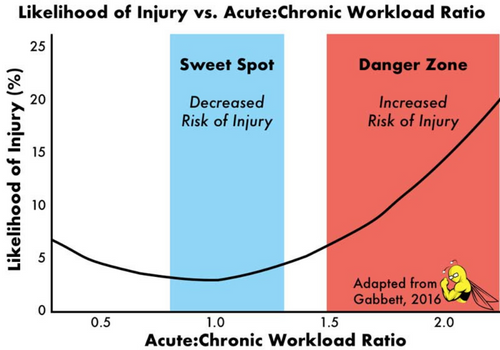
In addition to the AC ratio, we like to use a radar gun to measure the velocity of every throw. As we mentioned earlier in the article, we prefer a velocity based progression rather than a distance based progression. By using a radar gun to measure every throw, we can be sure the athlete isn’t throwing significantly harder than what they should be, regardless of the distance at which they’re throwing.
Here is our full list of criteria we are constantly monitoring during the throwing program:
- Maintain a full range of motion (forearm, elbow, shoulder)
- Maintain or improve strength measurements
- No pain with throwing or exercise
- AC ratio – Keep AC ratio around 1.2 to 1.3
- Radar gun velocity – Increase by no more than 2-3 mph each week
Tools for Measuring Criteria
- Goniometer – Used for measuring ROM
- Dynamometer – Used for measuring strength
- Pulse workload monitor – Used for measuring AC ratio
- Radar gun – Use for measuring throwing velocity
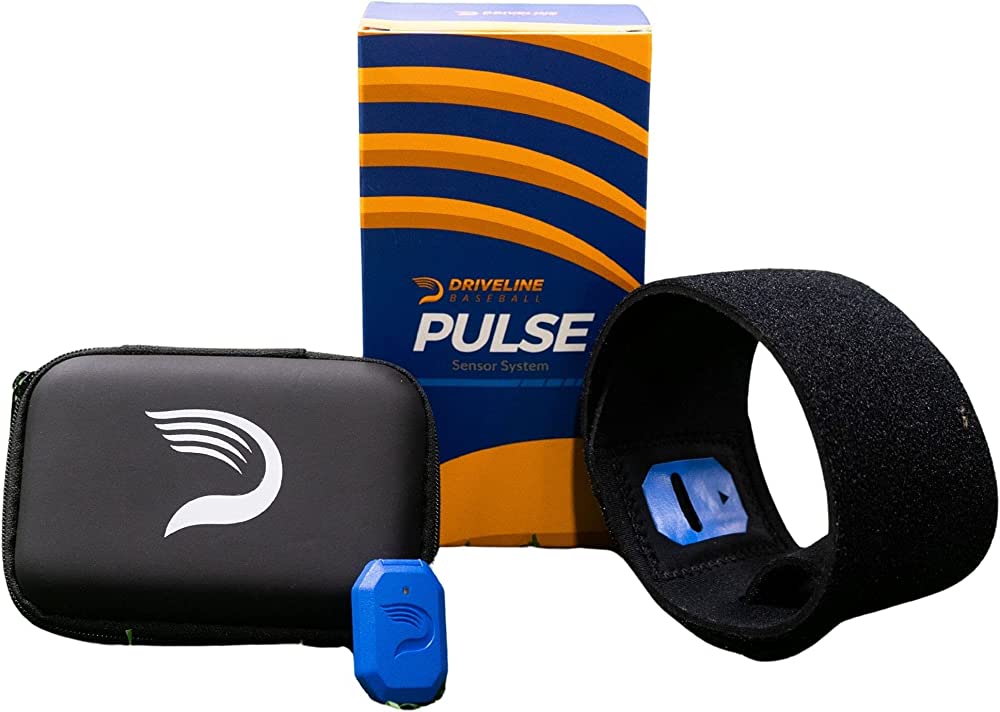
Exercises
Throwing most definitely takes priority during this phase, but all the other aspects of rehab and training should not be neglected. Our suggestion is to scale back the volume of upper body exercises at the beginning of the throwing program, and slowly add the volume back in as the arm gets accustomed to throwing.
At this point, there are very few restrictions when it comes to what the athlete is allowed to do with exercises. The goal should be to continue progressing all exercises in order to eventually return to the same type of training that the athlete would have done prior to injury.
Taking it a step further, the lengthy Tommy John rehab time offers an opportunity to actually make serious improvements in the weight room. The further removed from surgery, the more the athlete can push themselves in the weight room.
This side of the rehab is a bit beyond the scope of this article, and should ideally involve a strength coach or performance coach who can help the athlete identify their limitations, and build a strength training program designed to improve their weaknesses.
- Throwing program
- Velocity based throwing program
- Shoulder, elbow, forearm exercises
- Target all types of exercises (isometric, eccentric, plyometric, etc.)
- Continue progressing all exercises
- Upper body exercises
- Continue progressing all exercises
- Add in new stressors slowly
- Lower body exercises
- Continue progressing all exercises
Important Cautions
Of all the exercises that are done throughout the rehab, throwing is by far the most likely to cause pain or damage to the UCL if volume and intensity is not managed properly.
Again, always err on the side of caution and slow playing the throwing progression.
There will almost certainly be days or weeks when your arm doesn’t feel its best. These are the days to deload or dial back the intensity, and wait to progress the intensity until the arm feels good again. Nothing is written in stone when it comes to the throwing program, and having open communication between the athlete and therapist is a great way to adjust the program according to the athlete’s needs.
Ready to Progress
Moving from the early throwing progression into the advanced throwing progression should be a smooth transition, just like all other progressions throughout the rehab. Moving from one phase to the next should be almost unnoticeable. The timeline here is also highly dependent on the individual, and will vary depending on a number of factors.
The way we view the end of this phase is that the athlete has built up to about 80% of their previous game velocity, is throwing pain free, and hits all our other criteria check points.
- No pain with exercises or throwing
- AC ratio remains below 1.3
- Maintain full range of motion
- Maintain strength measurements
- Velocity is around 80% of previous game velocity
Advanced Throwing Progression (Months 9+)
Goals
Welcome to the final stage of the Tommy John rehab progression, it’s been a long road to get to this point, and it won’t be long before you get to enjoy the fruits of your labor!
By this point, the athlete should have completed a comprehensive return to throwing program, ultimately building up to around 80% of their previous game velocity. This phase is about taking the next steps to continue building up the workload on the arm, and eventually returning to game action.
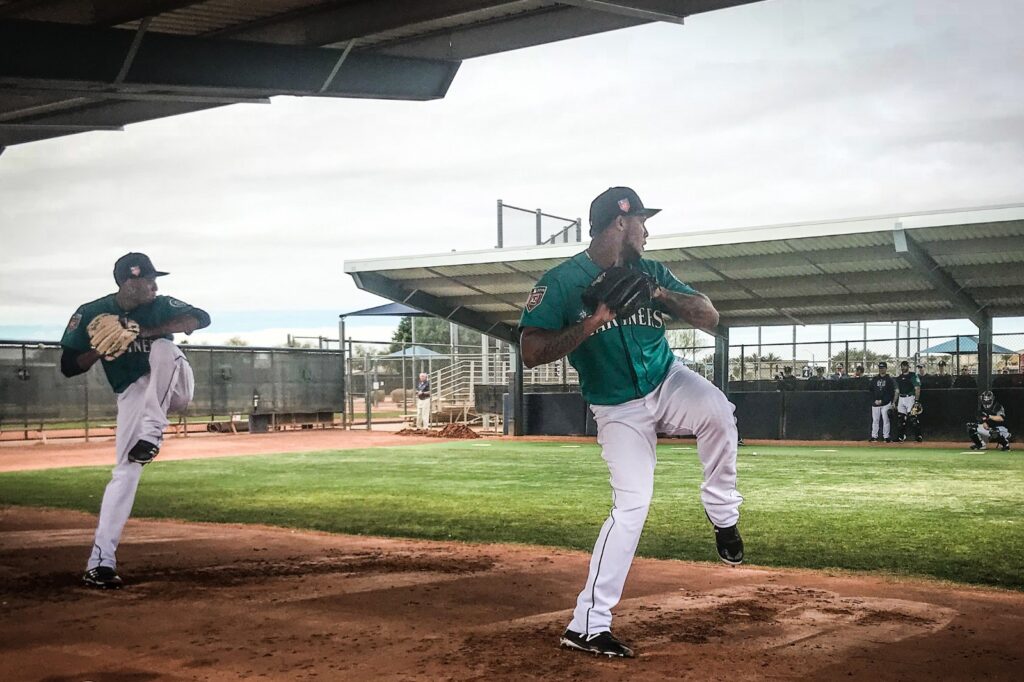
There is no exact science as to when it is best to return to the mound, but we typically have athletes return to the mound at the beginning of this phase. Studies show that throwing from the mound does not significantly increase stress on the elbow compared to throwing from flat ground. With this in mind, we prefer to get the athlete back on the mound earlier rather than later, in order for them to get acclimated to throwing from the slope.
The mound progression should be treated exactly the same as the return to throwing progression–start slow and gradually increase the volume and intensity week by week. Ideally, the athlete should shoot for at least 15-20 bullpen sessions before returning to game action. Besides increasing volume and intensity, introducing offspeed pitches must be taken into consideration. Offspeed pitches (curveball, slider, changeup, etc.) put a slightly different stress on different muscles within the arm, and must be introduced slowly and at lower efforts.
Once the athlete is throwing at 100% intensity for the desired number of pitches, as well as throwing all offspeed pitches at 100% intensity, it is time to progress into a game setting. At this point, we would treat the game progression similar to a preseason on ramp program. Increasing the workload by about 1 inning per week until fully stretched out (starting pitcher) or increasing the frequency of appearances (relief pitcher). Check out our free preseason throwing program for high school pitchers to get an idea of how we view on ramping for a season.
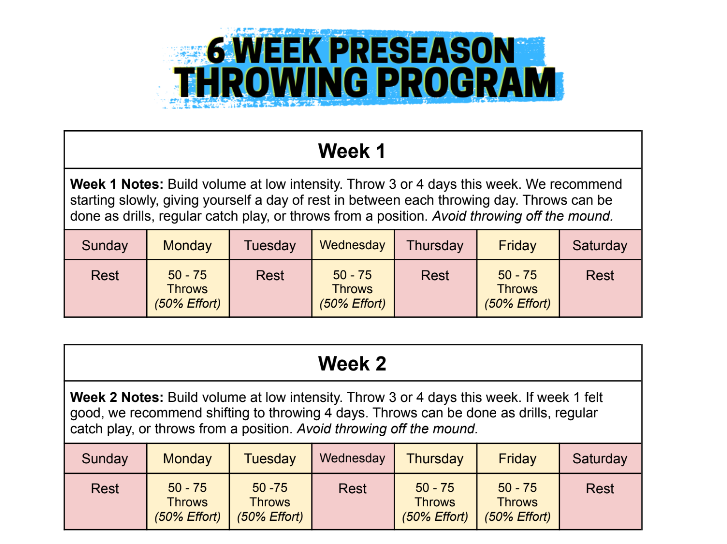
Overall, we continue with the same principles that we’ve used throughout the rehab. It may be tempting to try and rush the last few months in order to get back to game action sooner, but it is important to stay disciplined and consistent with adhering to the conservative programming!
Important Criteria
- Maintain a full range of motion (forearm, elbow, shoulder)
- Maintain or improve strength measurements
- No pain with throwing or exercise
- AC ratio – Keep AC ratio around 1.2 to 1.3
- Radar gun velocity – Increase by no more than 2-3 mph each week
Tools for Measuring Criteria
- Goniometer – Used for measuring ROM
- Dynamometer – Used for measuring strength
- Pulse workload monitor – Used for measuring AC ratio
- Radar gun – Use for measuring throwing velocity
Exercises
By now, the athlete should be fully returned to working out at the intensity and weights from pre-injury levels. Ideally, the athlete will have already moved beyond what they were doing before injury, and be making significant improvements in the weight room.
As for shoulder and forearm “arm care” exercises, the athlete should continue challenging themselves and progressing all these exercises. Being 9 or more months removed from surgery at this point should mean the athlete has “bullet proofed” their shoulder and forearm. Weakness in these areas at this point is inexcusable, and having a strong shoulder complex will be a determining factor of staying healthy going forward.
- Throwing program
- Velocity based mound progression
- Shoulder, elbow, forearm exercises
- Target all types of exercises (isometric, eccentric, plyometric, etc.)
- Continue progressing all exercises
- Upper body exercises
- Continue progressing all exercises
- Add in new stressors slowly
- Lower body exercises
- Continue progressing all exercises
Important Cautions
All the same cautions from earlier phases hold true here. The athlete and therapist should remain diligent in assessing how the athlete responds to new progressions in the throwing program. If you’ve come this far, it’s better to push something back a week rather than push through pain and risk having a serious setback!
There may be a temptation to cut back on “arm care” work at this point, now that you are so close to game action. Avoid this temptation at all costs! Stay diligent with shoulder, forearm, and scapula exercises to continue improving on the strength that you’ve built up to this point.
Ready to Progress
Progression from this phase constitutes a transition back into normal competition and life after Tommy John! Although you may be officially done with rehab, there are many lessons and principles that can be taken into the rest of your career.
Most notably, we advise athletes to continue with the same dedication to arm care exercises that they performed during the early stages of rehab. By continuing to strengthen all the muscles that are involved in throwing, the athlete gives themselves a better chance of preventing injury in the future, as well as giving themselves a better opportunity to increase velocity.
The use of AC ratio can also continue after moving on from rehab. Avoiding significant spikes in short term workload is one of the best ways to reduce risk of injury. The concept of slowly building up workload and intensity applies not only to throwing, but all athletic endeavors.
For younger athletes, the day to day schedule of rehab may come as a shock. A serious effort towards returning from TJ will require putting in multiple hours a day, at least 4+ times a week. This sort of time commitment is also what it takes to continue developing as a high level player and reach the next level. High school athletes can often get by on natural talent, but as the competition level increases, only the most dedicated athletes will continue to stand out and advance.
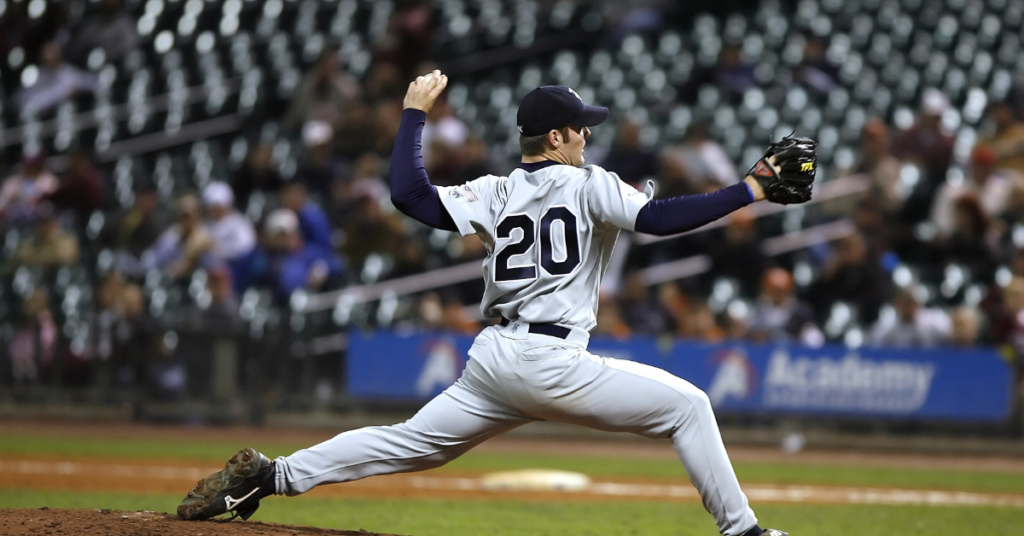
Conclusion
Tommy John surgery recovery is no walk in the park, but with dedication and a good plan, you can absolutely return from Tommy John as a better pitcher than before.
One of the primary determining factors in Tommy John rehab time is whether the athlete has undergone a full UCL reconstruction or an internal brace procedure. A full reconstruction comes with about a 12-14 month recovery time, whereas an internal brace procedure requires only 6-8 months for most pitchers.
As much as an athlete may want to have a quick recovery, the truth of the matter is that the healing process cannot be rushed. The new ligament must be given sufficient time in order to be able to handle the demands of throwing a baseball at high velocities. By trying to rush this process, the athlete will put themselves at serious risk of putting more stress on the ligament than what it’s ready to handle.

Having realistic expectations and a conservative mindset is a great way to increase the likelihood of a smooth and steady recovery. Not everything will go perfectly according to plan during the rehab process. The best way to deal with unexpected flare ups is to back off the intensity and let the body recover before progressing. Every athlete’s goal should be to avoid major setbacks, and understanding that minor setbacks are okay will help with this.
Deciding on when to progress from one phase to the next can be a make or break factor when it comes to having a successful recovery. If the pitcher is tasked with doing something they are not ready for, they put themselves at significant risk of a setback. This is why we use a criteria based protocol rather than a time based protocol.
With a criteria based protocol, the athlete only progresses when they hit certain thresholds on key tests in order to objectively demonstrate that they are ready to progress. Using a time based protocol leaves too much room for error, as every athlete heals at a different pace. We take the guesswork out of rehab by measuring all these criteria on a regular basis, preventing the athlete from cutting corners or rushing their rehab.
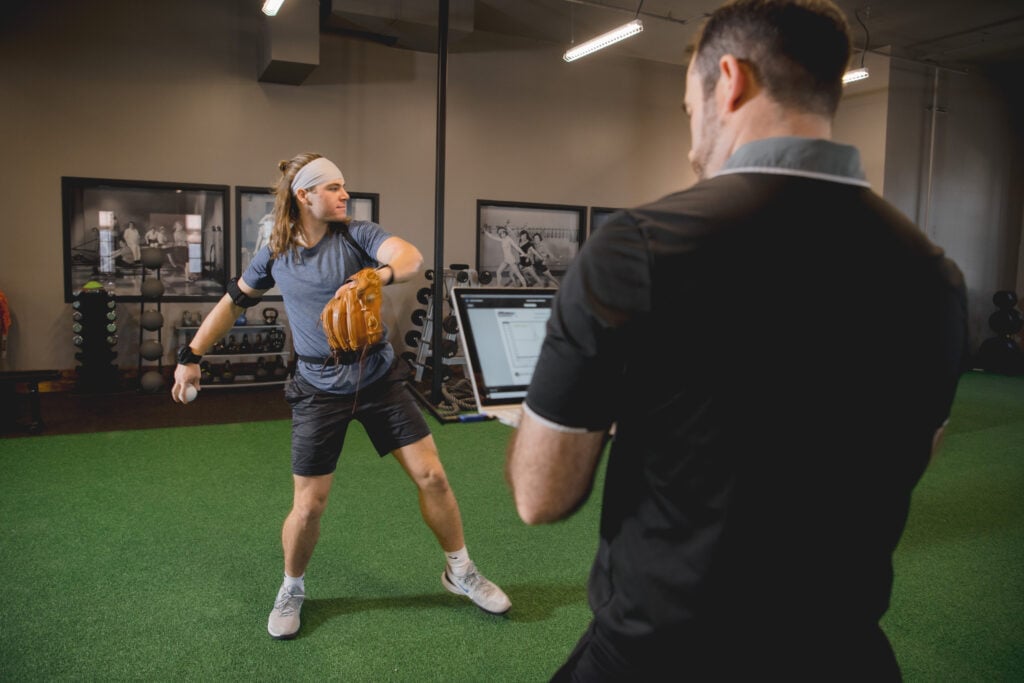
Everyone wants to come back from Tommy John surgery throwing harder. Unfortunately, only a small percentage of pitchers will actually do so. Although difficult, returning from TJ throwing harder and being a better pitcher is absolutely possible with complete dedication to the process.
Dedication here does not mean doing as much as possible as quickly as possible. Dedication means understanding when to be conservative, how to listen to your body, and prioritizing the factors that will actually help with recovery in the long run. Some of these factors include doctor of choice, sleep, nutrition, prioritizing total body strength & mobility, following the treatment plan from the PT, and using all available technology to assist in your recovery.
Tommy John surgery recovery time can seem daunting, but for the athlete who wants to have a successful rehab, the recovery time should be used wisely. We have had great success using these methods with baseball players who have rehabbed from Tommy John surgery with us. It requires a commitment from both the athlete and the physical therapist, but we believe that using this approach creates an edge for the pitcher to return to game action as a better version of themselves.
If you found this article helpful, we would greatly appreciate you sharing with others who may benefit from this information.
Kinetic Sports Medicine and Performance is a physical therapy clinic located in Delafield, Wisconsin, and we specialize in treating athletes. Follow us on social media to learn more about what we do and how we look at sports related injuries. If you’re having elbow pain, rehabbing your own Tommy John injury now, or have any questions you’d like addressed by a physical therapist who specializes in Tommy John rehab, contact us today.
